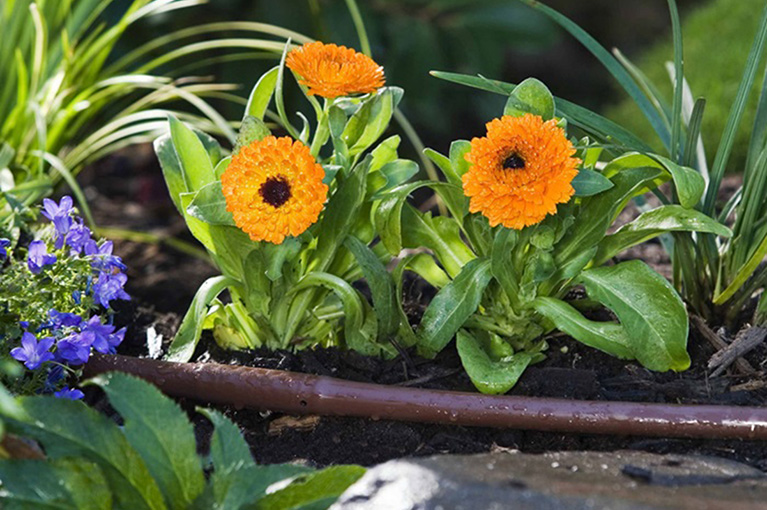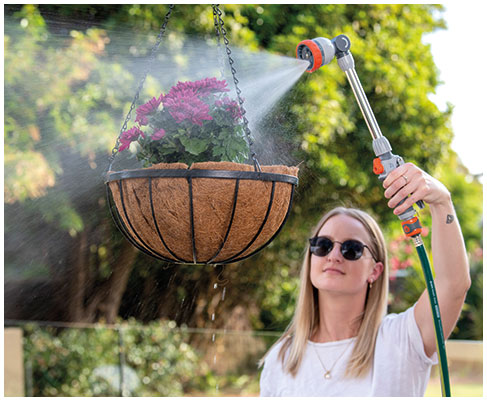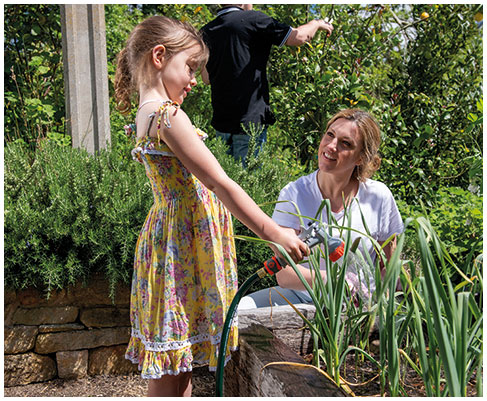More and more people are starting to grow their own vegetables at home as it can be rewarding to eat food you’ve grown and has great environmental and health benefits too. It’s a fantastic way to see how vegetables are grown and gives a sense of pride from garden to plate.
While it can be effective to plant vegetables into soil after digging and composting, most people decide to create a garden bed specifically for growing vegetable patches. In this case, a raised vegetable bed has many benefits compared to planting straight into your garden soil.
Benefits of a raised veggie garden
Whether you have a large or small backyard, having a specific area for your veggies can give a tidy and neat impression while adding character to your garden. Not only is it easier to control the growing produce, when it’s time to harvest your veggie patch you’ll have lovely produce if you use quality soil and compost well.
Having a raised vegetable garden requires less maintenance and is easy to access during your gardening, as well as growing less weeds than other areas of your garden, if you use a weed-free soil. As your veggie garden bed is raised, it also allows good drainage when watering but allows the vegetables to be well-watered, with birds less likely to dig out seedlings as well.
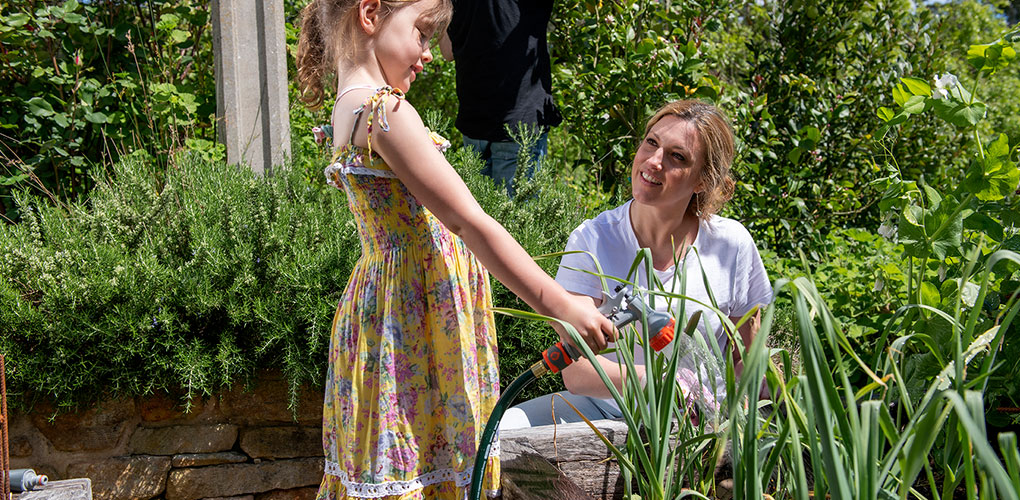
Types of raised garden beds
Depending on the size of your garden and how many vegetables you want to grow, this will decide what kind of raised veggie garden you’ll purchase. With plenty of kits available from 1m x 1m beds for small spaces and corrugated iron beds that come in many shapes and sizes, it’s easy to find a veggie garden bed that works for your style and space.
While small veggie patches seem easy to maintain, they can get hot quickly during warmer months as the space between root and walls are not very thick, so using a robust mulch and watering regularly will help minimise heat damage. It can help if you use wooden sleepers held with strong bolts or pegs, or more permanently, use bricks or stone.
Due to its strength, style and slender profile, corten steel is more popular than ever especially with smaller gardens, though it can be slightly more pricey. Wicking beds are also great as they have a reservoir of water to slowly feed into the root system, giving constant moisture to promote vegetable growth.
Growing your own DIY veggie garden and styling it your own way is easier than ever as you can get creative with small tubs, old baths and washing machine tubs for your veggies or herbs. Try a Glass Reinforced Cement trough for small spaces on your balcony or courtyard – they are lightweight, keep cool and can be painted however you like. For larger spaces, try using straw bales as the walls as it is easy to set up while adding extra insulation and enriches the soil of your veggie garden bed.
How to care for your veggie patch
Caring for your veggie patch is easy, simply place raised vegetable beds in the sunny area of your garden, prepare your watering system on a timer and adjust when necessary. If you want to install an irrigation system, check out Pope Irrigation for product recommendations to get you started. We’ll help keep your veggie garden hydrated, whether you need tap timers, drip tubes or multi-pattern hand sprays!
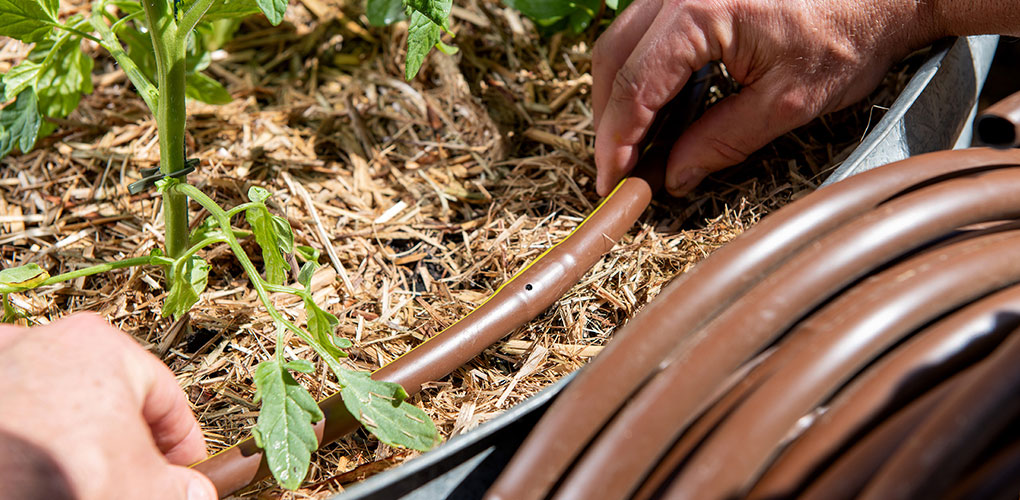 Pope Irrigation
Pope Irrigation

Pope's DIY Tip
If you’re a beginner, starting with veggies that grow year round like leafy greens or beans are a great start and you won’t need to wait long for results, as well as your favourite herbs to add freshness to your dinner plate. Check out our vegetable planting guide to see what veggies you can produce during the year in Australia.
For more useful tips on watering and starting your own veggie garden, visit Pope Projects and watch the DIY videos.
Whether you have a large or small backyard, having a specific area for your veggies can give a tidy and neat impression while adding character to your garden. Not only is it easier to control the growing produce, when it’s time to harvest your veggie patch you’ll have lovely produce if you use quality soil and compost well.
Having a raised vegetable garden requires less maintenance and is easy to access during your gardening, as well as growing less weeds than other areas of your garden, if you use a weed-free soil. As your veggie garden bed is raised, it also allows good drainage when watering but allows the vegetables to be well-watered, with birds less likely to dig out seedlings as well.

Depending on the size of your garden and how many vegetables you want to grow, this will decide what kind of raised veggie garden you’ll purchase. With plenty of kits available from 1m x 1m beds for small spaces and corrugated iron beds that come in many shapes and sizes, it’s easy to find a veggie garden bed that works for your style and space.
While small veggie patches seem easy to maintain, they can get hot quickly during warmer months as the space between root and walls are not very thick, so using a robust mulch and watering regularly will help minimise heat damage. It can help if you use wooden sleepers held with strong bolts or pegs, or more permanently, use bricks or stone.
Due to its strength, style and slender profile, corten steel is more popular than ever especially with smaller gardens, though it can be slightly more pricey. Wicking beds are also great as they have a reservoir of water to slowly feed into the root system, giving constant moisture to promote vegetable growth.
Growing your own DIY veggie garden and styling it your own way is easier than ever as you can get creative with small tubs, old baths and washing machine tubs for your veggies or herbs. Try a Glass Reinforced Cement trough for small spaces on your balcony or courtyard – they are lightweight, keep cool and can be painted however you like. For larger spaces, try using straw bales as the walls as it is easy to set up while adding extra insulation and enriches the soil of your veggie garden bed.
How to care for your veggie patch
Caring for your veggie patch is easy, simply place raised vegetable beds in the sunny area of your garden, prepare your watering system on a timer and adjust when necessary. If you want to install an irrigation system, check out Pope Irrigation for product recommendations to get you started. We’ll help keep your veggie garden hydrated, whether you need tap timers, drip tubes or multi-pattern hand sprays!
 Pope Irrigation
Pope Irrigation

Pope's DIY Tip
If you’re a beginner, starting with veggies that grow year round like leafy greens or beans are a great start and you won’t need to wait long for results, as well as your favourite herbs to add freshness to your dinner plate. Check out our vegetable planting guide to see what veggies you can produce during the year in Australia.
For more useful tips on watering and starting your own veggie garden, visit Pope Projects and watch the DIY videos.
Caring for your veggie patch is easy, simply place raised vegetable beds in the sunny area of your garden, prepare your watering system on a timer and adjust when necessary. If you want to install an irrigation system, check out Pope Irrigation for product recommendations to get you started. We’ll help keep your veggie garden hydrated, whether you need tap timers, drip tubes or multi-pattern hand sprays!


Pope's DIY Tip
If you’re a beginner, starting with veggies that grow year round like leafy greens or beans are a great start and you won’t need to wait long for results, as well as your favourite herbs to add freshness to your dinner plate. Check out our vegetable planting guide to see what veggies you can produce during the year in Australia.
For more useful tips on watering and starting your own veggie garden, visit Pope Projects and watch the DIY videos.









